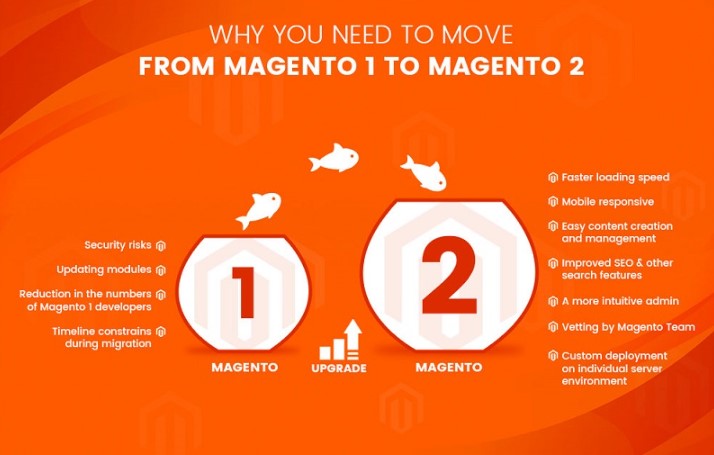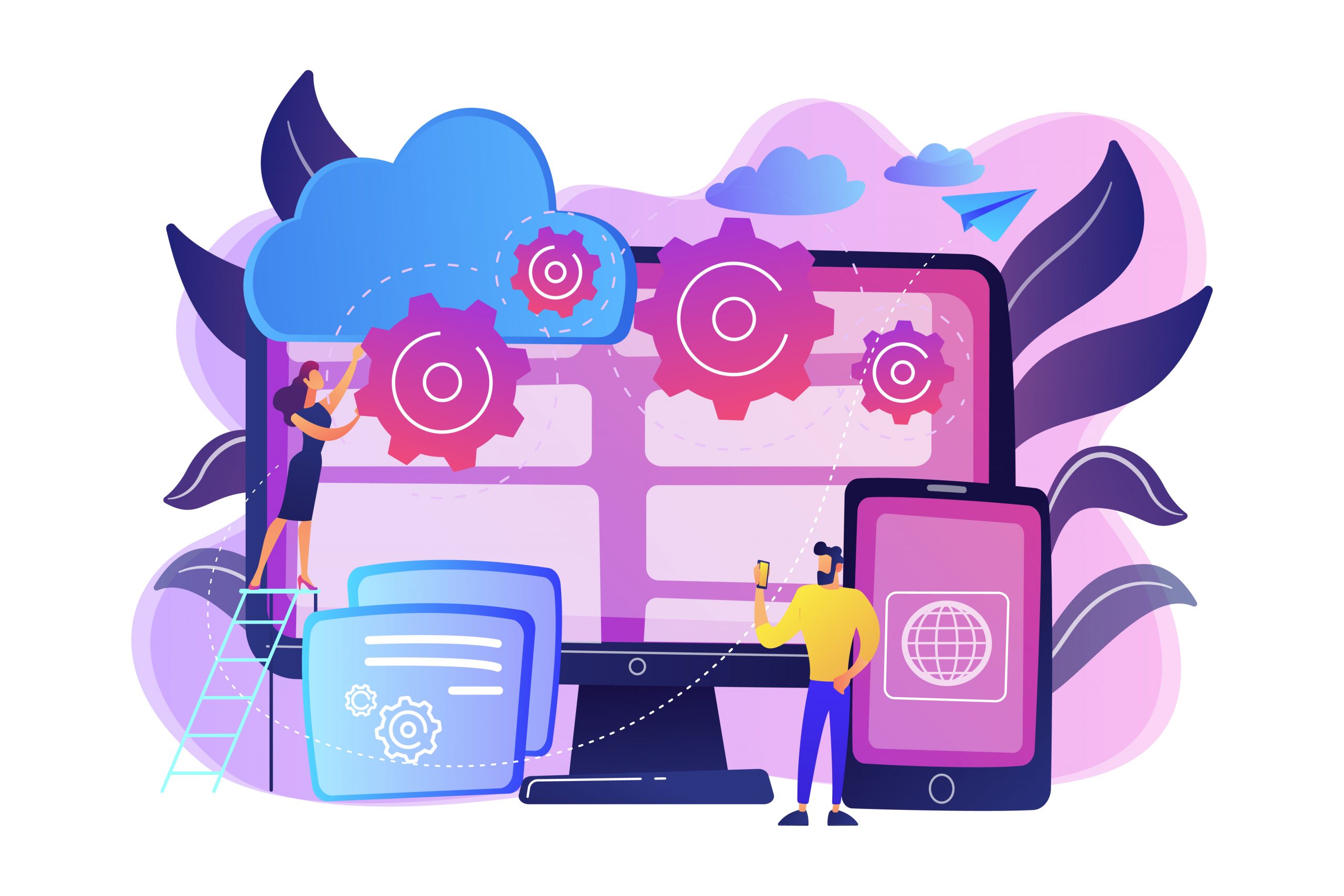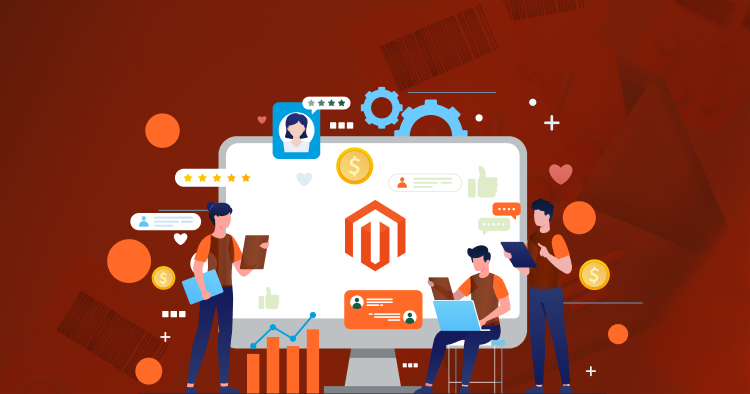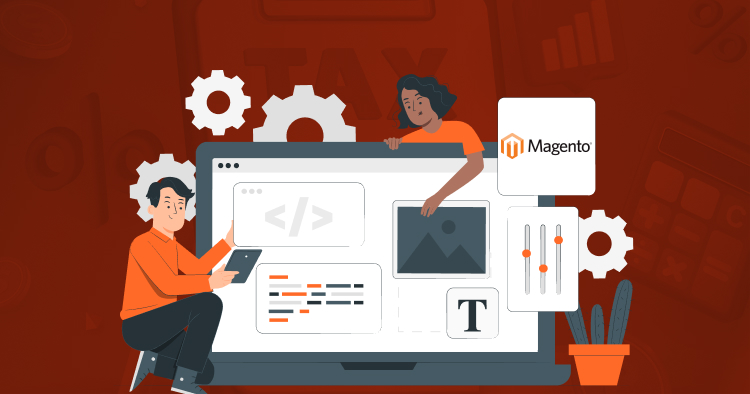Magento 1 is the leading e-Commerce platform, but technology is always improving, and that’s why Magento also released its new version, which is known as Magento 2.
It is much more efficient, user-friendly, and performs better than Magento 1. But why is it essential to migrate from Magento 1 to Magento 2?
This blog will discuss why Magento 1 to Magento 2 migration is important for businesses today and what benefits you can reap from making the change.
Magento 1 and Magento 2 Have Different Features!
Following are the features of Magento and Magento 2:
Handling Frontend Development
One of the biggest differences between Magento 1 and Magento 2 is how they handle front-end development.
With Magento 1, developers must work with a complicated XML structure to change the front end. It can be quite time-consuming and often results in errors.
Magento 2, on the other hand, uses a much simpler system called “layouts.” With layouts, developers can make changes to the front end without touching a single line of XML code.
Handling Upgrades
The way Magento 1 and Magento 2 handle upgrades is different. With Magento 1, upgrading to a new version can be an absolute nightmare.
Not only do you have to upgrade your core files, but you also have to update all of your extensions—and hope that they don’t break anything in the process. With Magento 2, however, upgrading is much simpler.
You can update your core files and extensions independently of each other, which means that if an extension does break after an upgrade, it’s much easier to fix.
Magento 2 is Much Faster Than Magento 1
Magento 2 is significantly faster than Magento 1. It is due to several factors, including improved caching capabilities and better code optimization.
Not only does this mean that your customers will have a better experience on your site, but it also means that your site will be able to handle more traffic without slowing down.
Magento 1 is No Longer Supported!
As of June 30, 2020, Magento 1 is no longer supported. It means that there will be no more security patches or updates released for the software.
While this may surprise some, the end of support for Magento 1 has been years.
In 2018, Adobe acquired Magento and announced that they would only provide software support until June 2020. Since then, Adobe has been urging users to migrate to Magento 2.
Now is the time to do so for those who still need to make the switch. While Magento 1 may still work, it is only a matter of time before security vulnerabilities emerge.
By migrating to Magento 2, you can ensure that your store remains secure and compliant with all the latest laws and regulations.
Why Should You Migrate from Magento 1 to Magento 2?
Here are the 5 top reasons why you should do Magento 1 to Magento 2 migration:
- Improved Performance: Magento 2 is built on PHP 7, which makes it faster and more efficient than Magento 1. It leads to improved page load times, resulting in better user experience, higher conversion rates, and increased sales.
- Better Shopping Experience: The new version offers customers a smooth and intuitive shopping journey. It has improved product search capability, streamlined checkout process, and drag & drop CMS editing feature that helps you easily create stunning web pages for your store.
- SEO Optimization: Magento 2 is SEO friendly with advanced features such as URL rewrites and meta tags for optimization of content across product pages, categories, etc., helping you deliver better visibility in search engine results.
- Security: Magento 2 offers more robust security for your store with secure payment options and an improved authentication system. It also supports PCI compliance, which is critical for online stores that securely and safely store customers’ credit card information.
- Improved Analytics & Reporting: Magento 2 comes with an in-built dashboard that helps you obtain detailed insights into your customer’s behavior and better analyze their purchase patterns, spending habits, etc., enabling you to make informed decisions to improve the shopping experience and increase sales.
Magento 1 to Magento 2 Migration Can Be Tricky!
You are probably aware that Magento 1 support is no longer available, so you must do Magento 1 to Magento 2.
While the process can be daunting, we’re here to help with some tips to make sure your transition goes as smoothly as possible:
1. Plan Ahead
The first step in any migration is to plan. You’ll need to consider the budget, timeline, and features you want to keep or add in Magento.
Once you have a plan, you can start mapping out the steps you’ll need to take to make your migration successful.
2. Backup Your Data
This one is crucial! Before you start making any changes, be sure to back up your existing Magento 1 store.
That way, you can always revert to a working version of your store if anything goes wrong during the migration process.
3. Choose a Migration Tool
There are a few different ways to migrate your data from Magento 1 to Magento 2, but we recommend using a tool specifically designed for the task.
It will make the process much easier and help ensure all your data is transferred correctly. Some popular migration tools include MageParts’ M1toM2 and WebKul’s Bulk Product Migration Toolkit.
4. Test, Test, Test!
Once you’ve migrated your data to Magento 2, testing everything thoroughly before going live with your new store is essential.
Create test orders and check the customer experience from start to finish. It will help you catch any potential issues before they cause problems for your real customers.
If You Can’t Do Migration By Yourself, Hire Someone!
If you need the technical know-how or resources to migrate yourself, don’t worry. You can either consult a Magento web development company or hire a Magento developer who provides Magento 2 migration services quickly and efficiently.
Just make sure that you do your research and choose an experienced developer so you can be sure that your data will be transferred safely and securely.
The Bottom Line
It’s simple: To stay competitive in today’s e-Commerce market, migrating from Magento 1 to Magento 2 is an absolute must. It provides better performance, greater scalability, and improved security. It also offers better analytics & reporting capabilities that can help you better understand your customer’s behavior and optimize their shopping experience.
FAQs
Q1: Why is Magento 1 to Magento 2 migration important?
A: Magento 2 offers improved performance, scalability, and security, as well as better analytics & reporting capabilities, making it essential for any e-Commerce business that wants to stay competitive.
Q2: What steps are involved in migrating from Magento 1 to Magento 2?
A: The process involves planning, backing up your data, choosing a migration tool, testing everything out thoroughly before going live with your new store, and, if needed, hiring an experienced developer to help with the transition. Migration of Magento 2 Pricing will depend on whether you hire an individual or an agency.
Q3: How can I ensure my data is transferred safely and securely when doing a Magento 1 to Magento 2 migration?
A: We recommend using a tool specifically designed for Magento 1 to Magento 2 migration and, if needed, hiring an experienced developer specializing in this type of transition. It will ensure that your data is transferred safely and securely.





